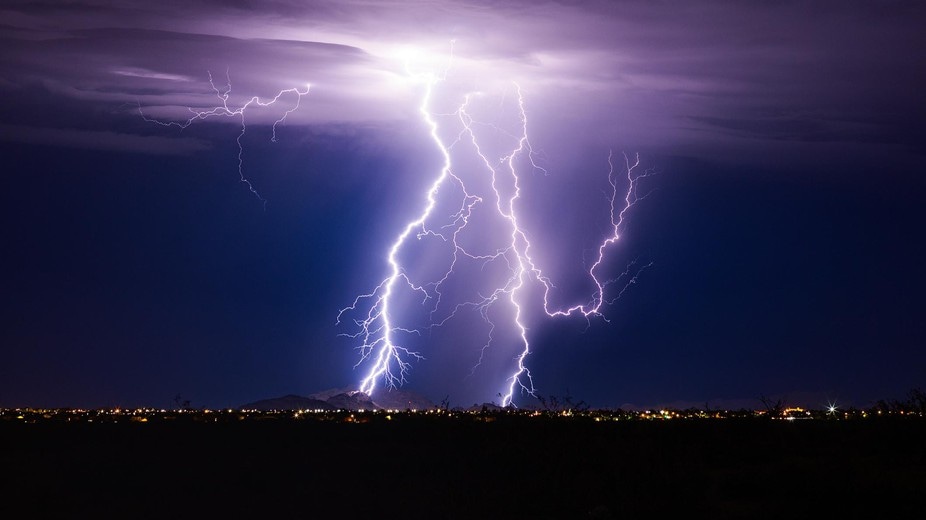Nov 11 2019
EPFL scientists have developed a unique method to predict lightning strikes to the nearest 10 to 30 minutes and within a 30 km radius.
 Image credit: © 2019 iStock.
Image credit: © 2019 iStock.
The system utilizes a combination of regular meteorological data from weather stations as well as artificial intelligence.
Lightning is one of nature’s most unpredictable phenomena. It sets fire to forests and homes, and frequently kills people and animals. It also damages wind turbines, power lines, and solar-panel installations, and keeps aircraft grounded. However, not much is known about how lightning is exactly triggered, and no easy technology is available to predict where and when lightning is likely to hit the ground.
At EPFL’s School of Engineering, scientists in the Electromagnetic Compatibility Laboratory have created a simple and cost-effective system that has the ability to predict when and where lightning will strike to the nearest 10 to 30 minutes and within a radius of 30 km. The study was headed by Farhad Rachidi.
The novel system employs a combination of artificial intelligence and regular meteorological data. The study has been reported in Nature partner journal, Climate and Atmospheric Science. The scientists are currently planning to utilize their unique technology in the European Laser Lightning Rod project.
Current systems are slow and very complex, and they require expensive external data acquired by radar or satellite. Our method uses data that can be obtained from any weather station. That means we can cover remote regions that are out of radar and satellite range and where communication networks are unavailable.
Amirhossein Mostajabi, PhD Student, School of Engineering, EPFL
Mostajabi developed the novel method.
Moreover, since information can be obtained effortlessly and in real time, predictions can be made more rapidly and alerts can be sent even before the formation of a storm.
Training the Machine Using Available Data
The method developed by the EPFL team involves utilizing a machine-learning algorithm that has been taught to identify conditions that result in lightning. To perform the training, the team utilized data gathered over a period of 10 years from 12 Swiss weather stations, situated in both mountainous and urban regions.
Four parameters were considered here, such as wind speed, relative humidity, air temperature, and atmospheric pressure. These four parameters were then matched with the recordings obtained from lightning detection and location systems. With the help of that technique, the machine-learning algorithm effectively learned the conditions under which lightning takes place.
After the system was trained, it made predictions that proved correct nearly 80% of the time. At present, the system can be utilized anywhere.
This is the first-ever study in which a system based on easy meteorological information was able to predict where and when lightning will strike, via real-time calculations. The technique provides an easy way to predict an intricate phenomenon.
Laser Lightning Rod Project
The European Laser Lightning Rod project is aiming to create systems to guard against lightning strikes. The project was introduced in 2017, where multi-terawatt short laser pulses are sent into the atmosphere at the time of a storm to trigger lightning. This lightning is then guided toward a particular site and away from sensitive regions.
Using their machine-learning-based technique, the EPFL scientists will contribute to this project by predicting where and when lightning strikes are likely to take place.